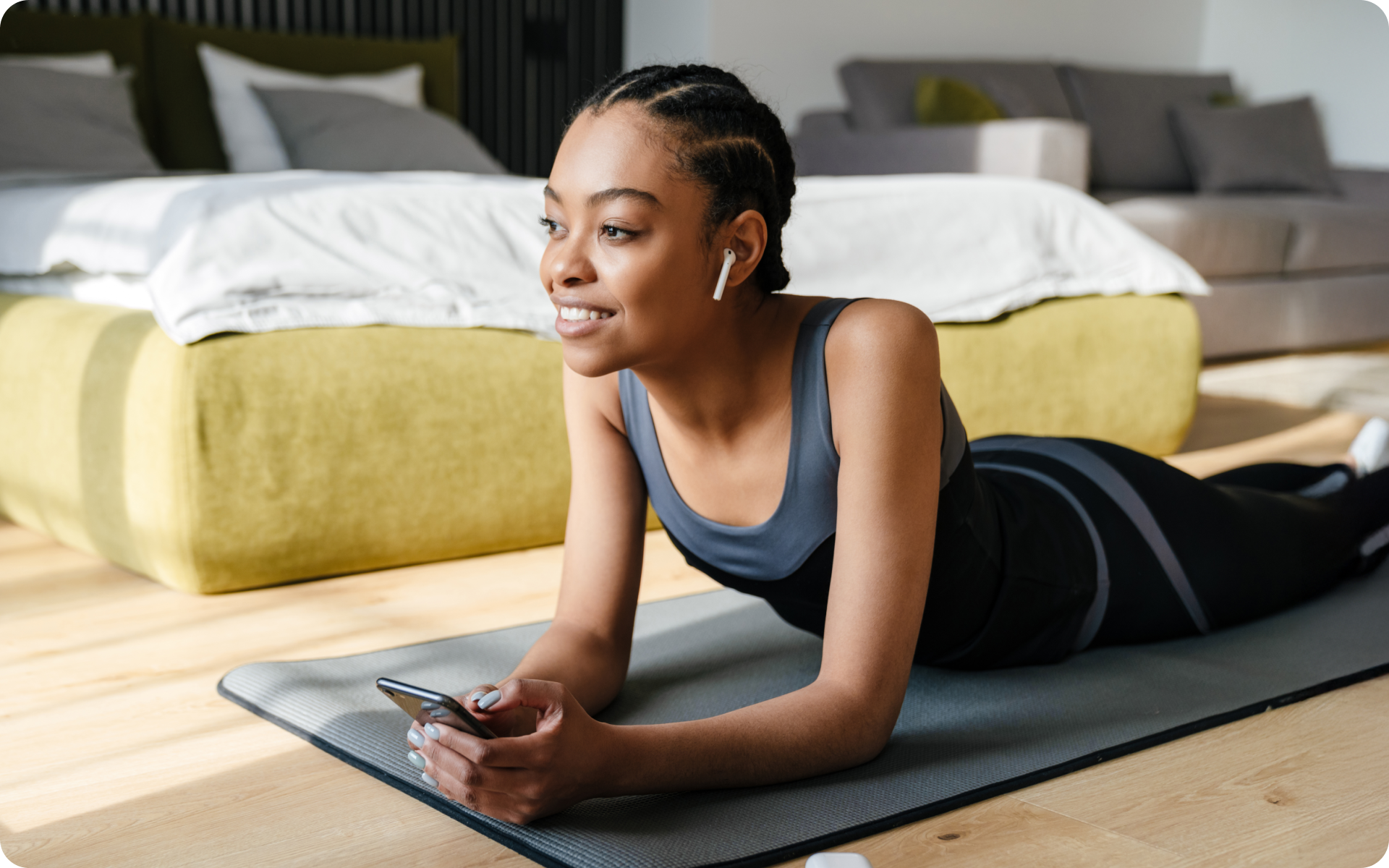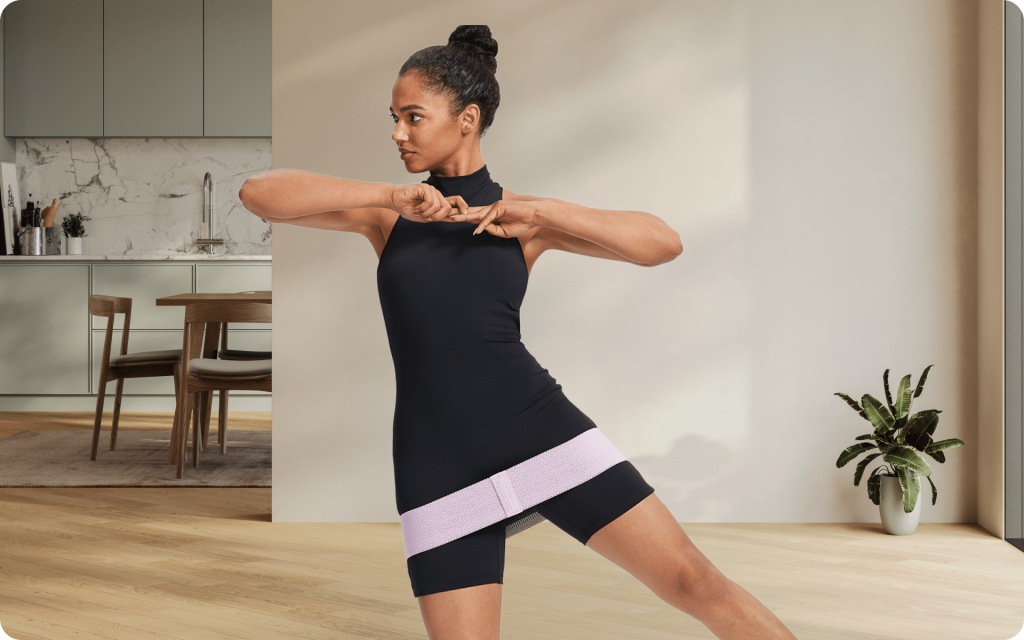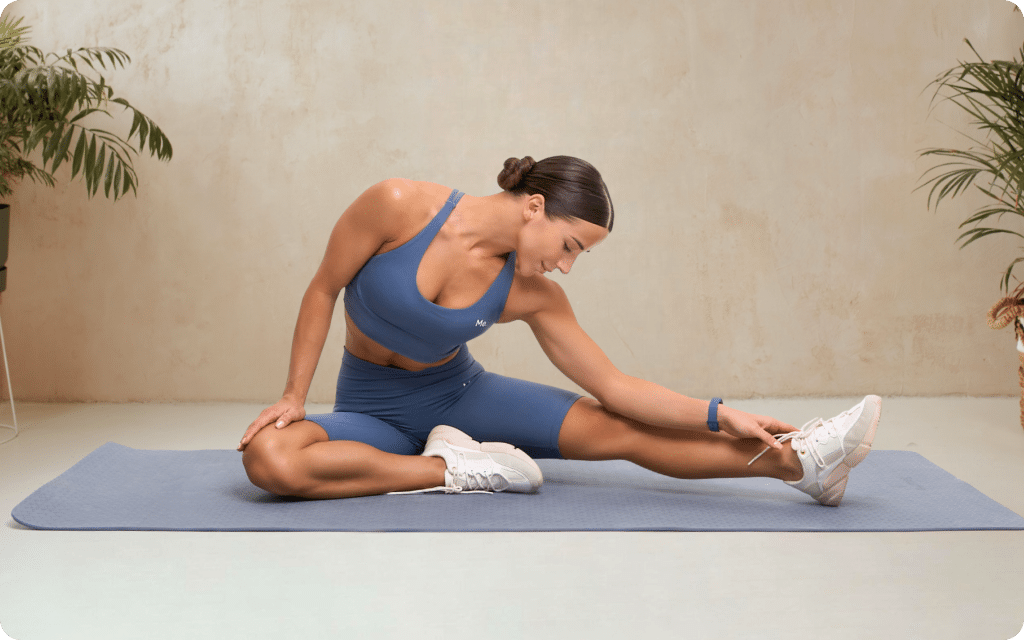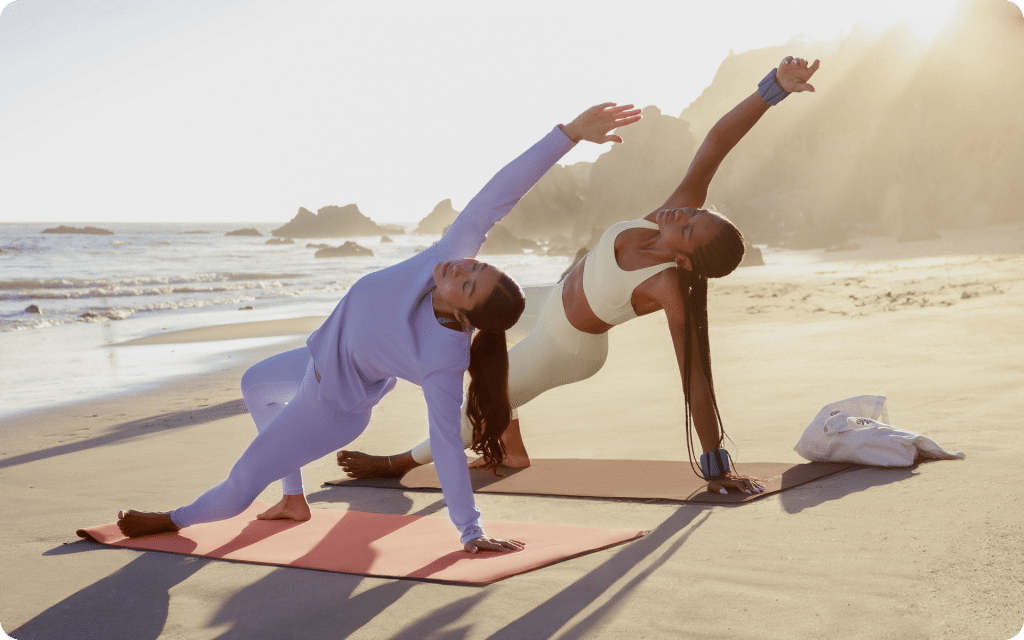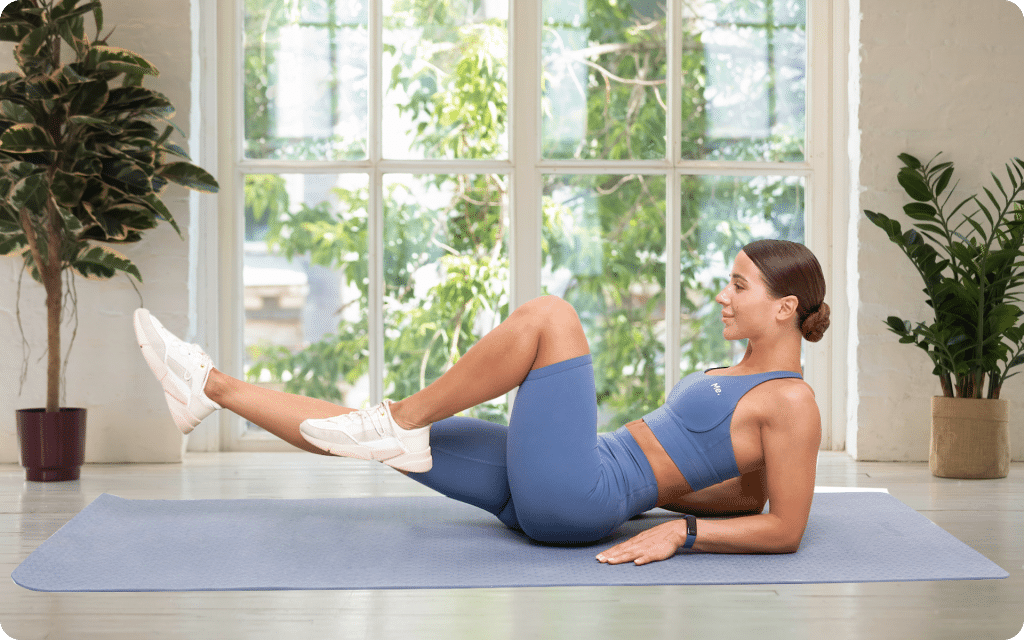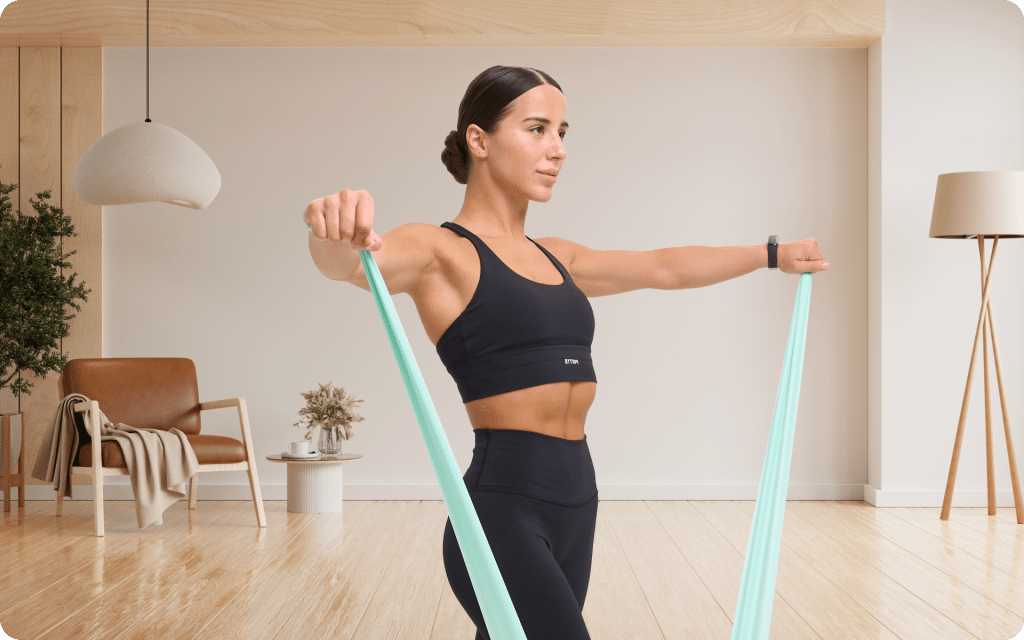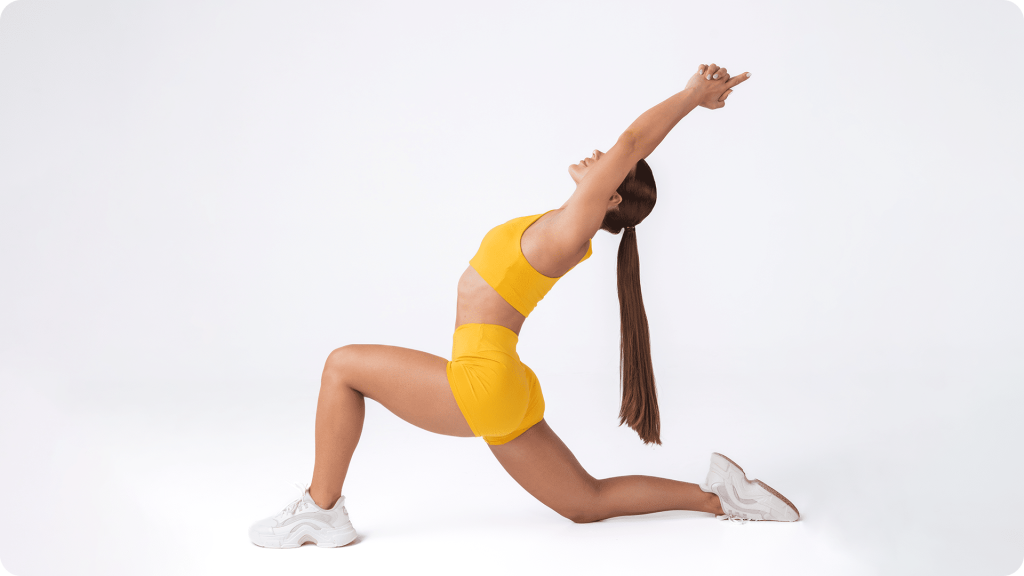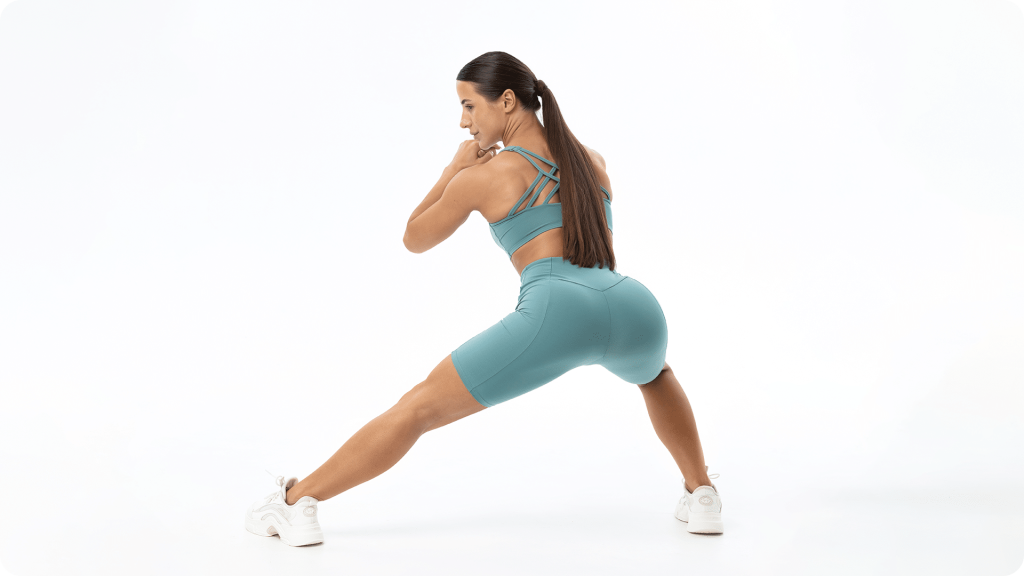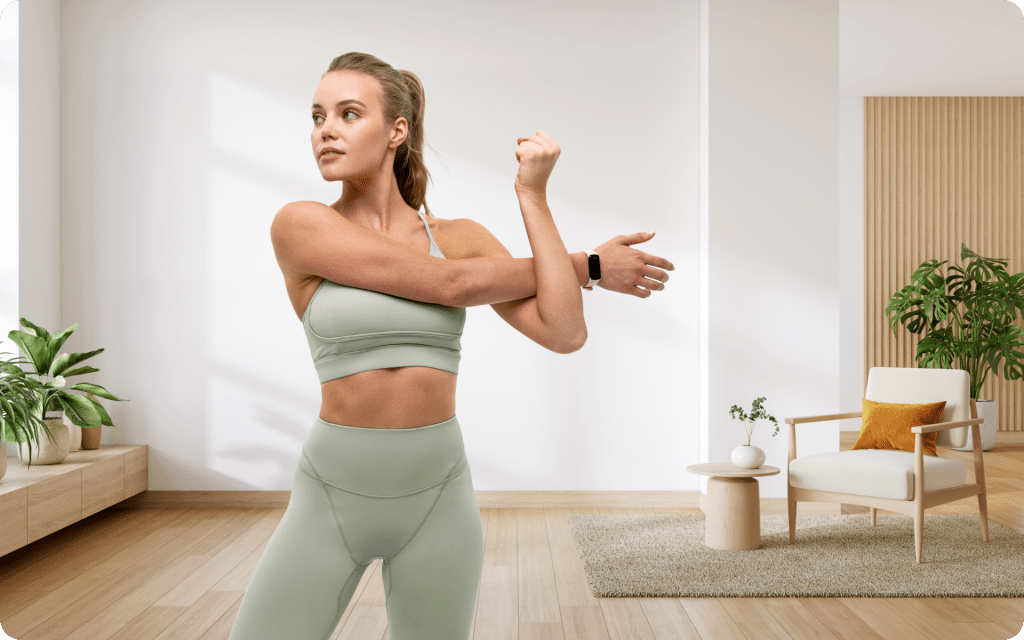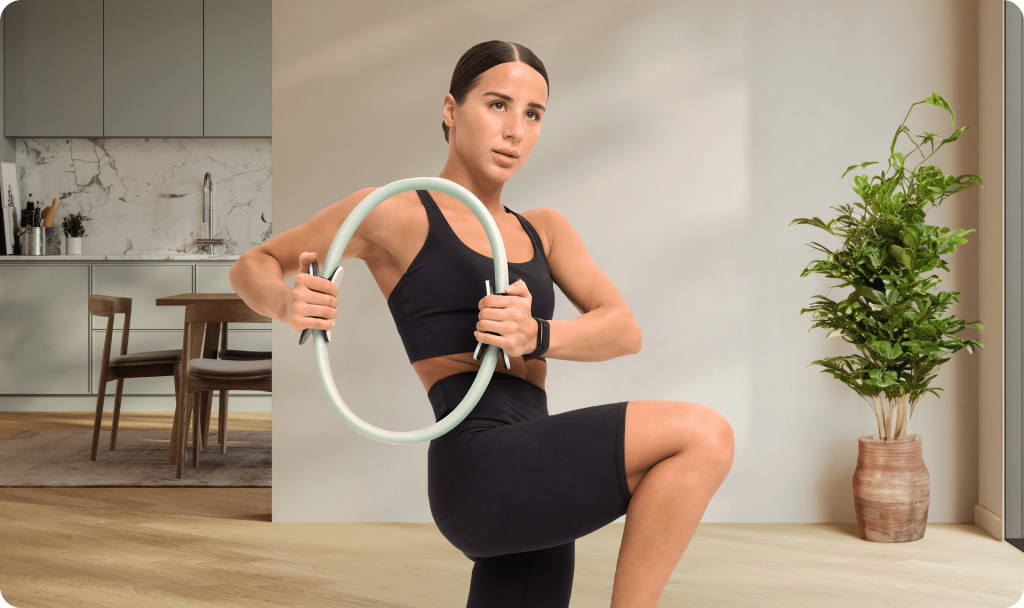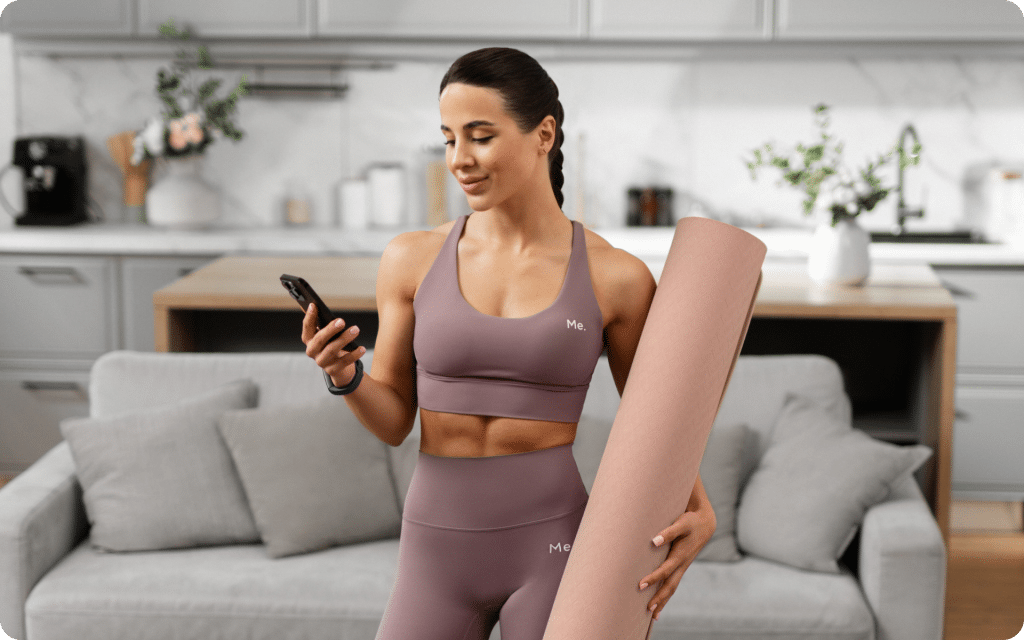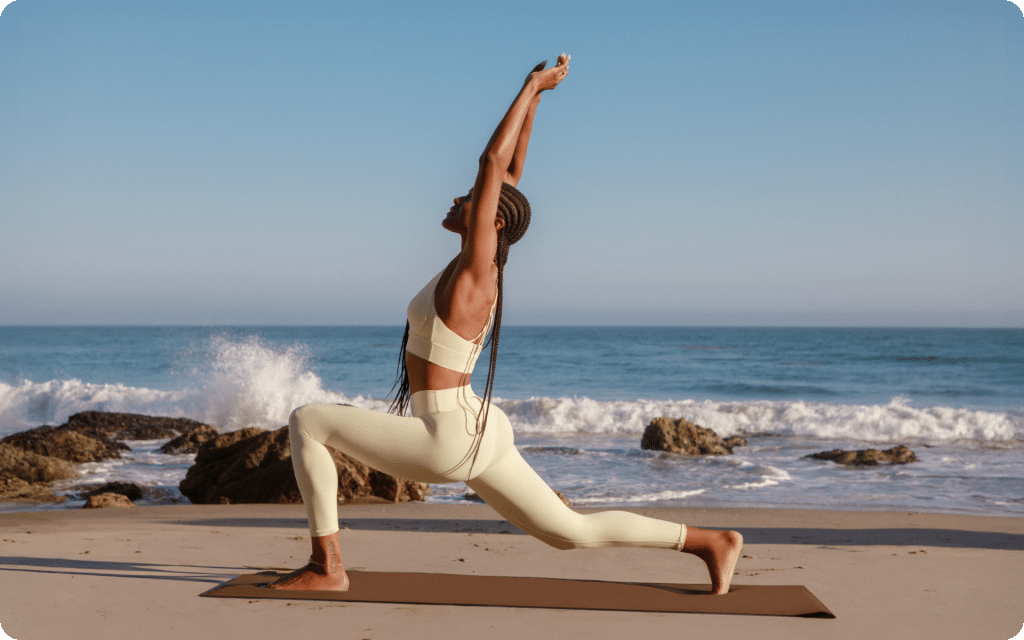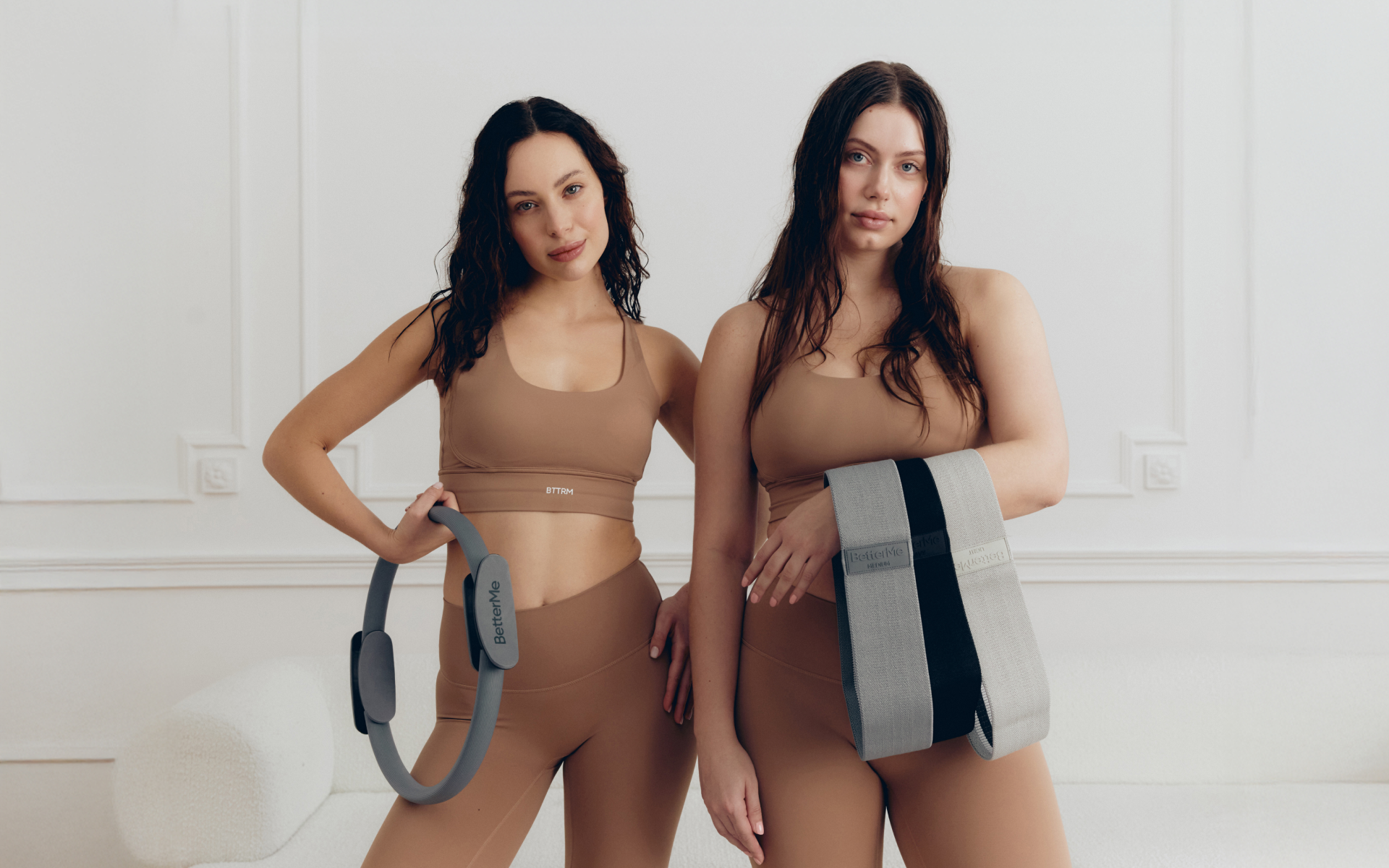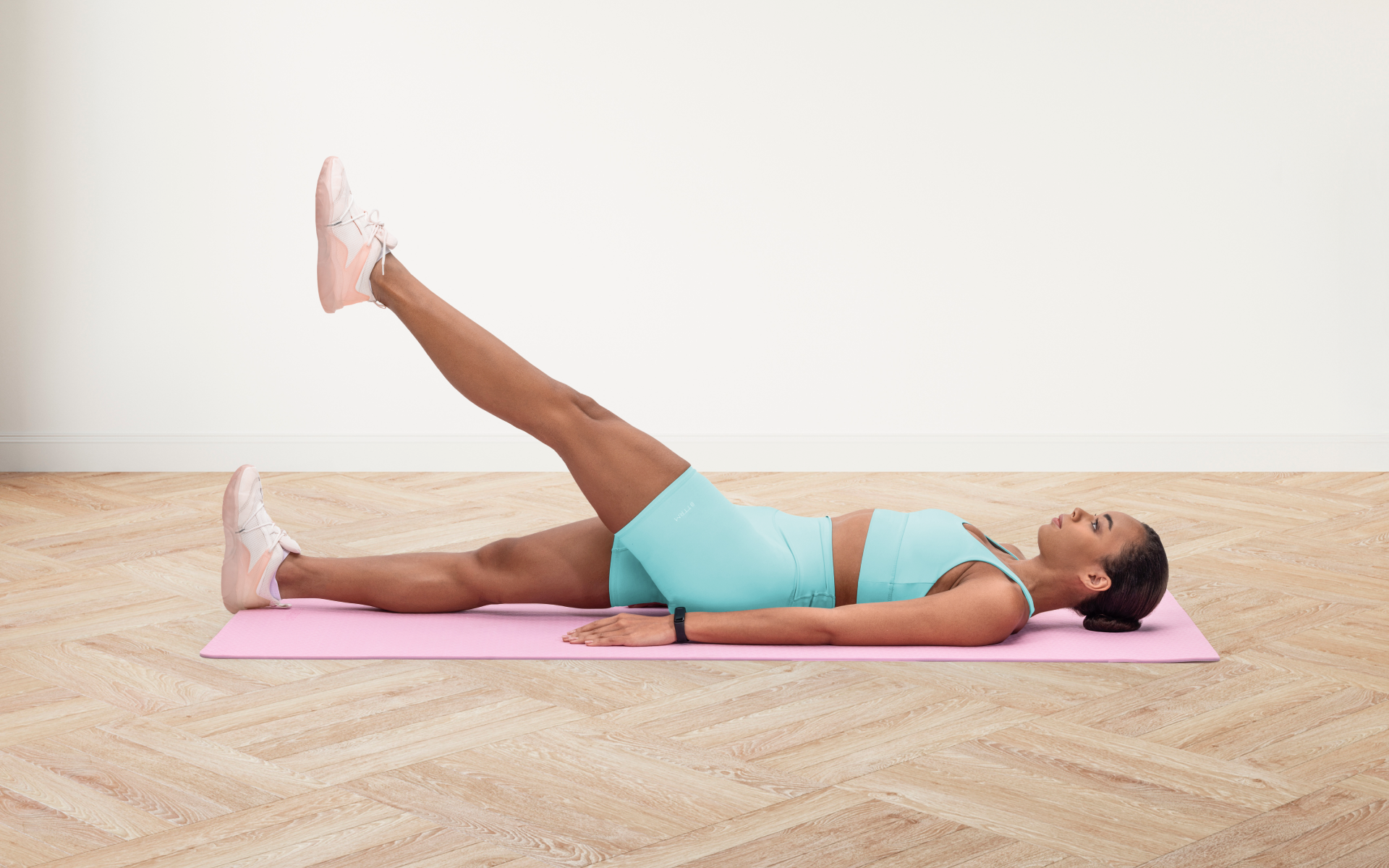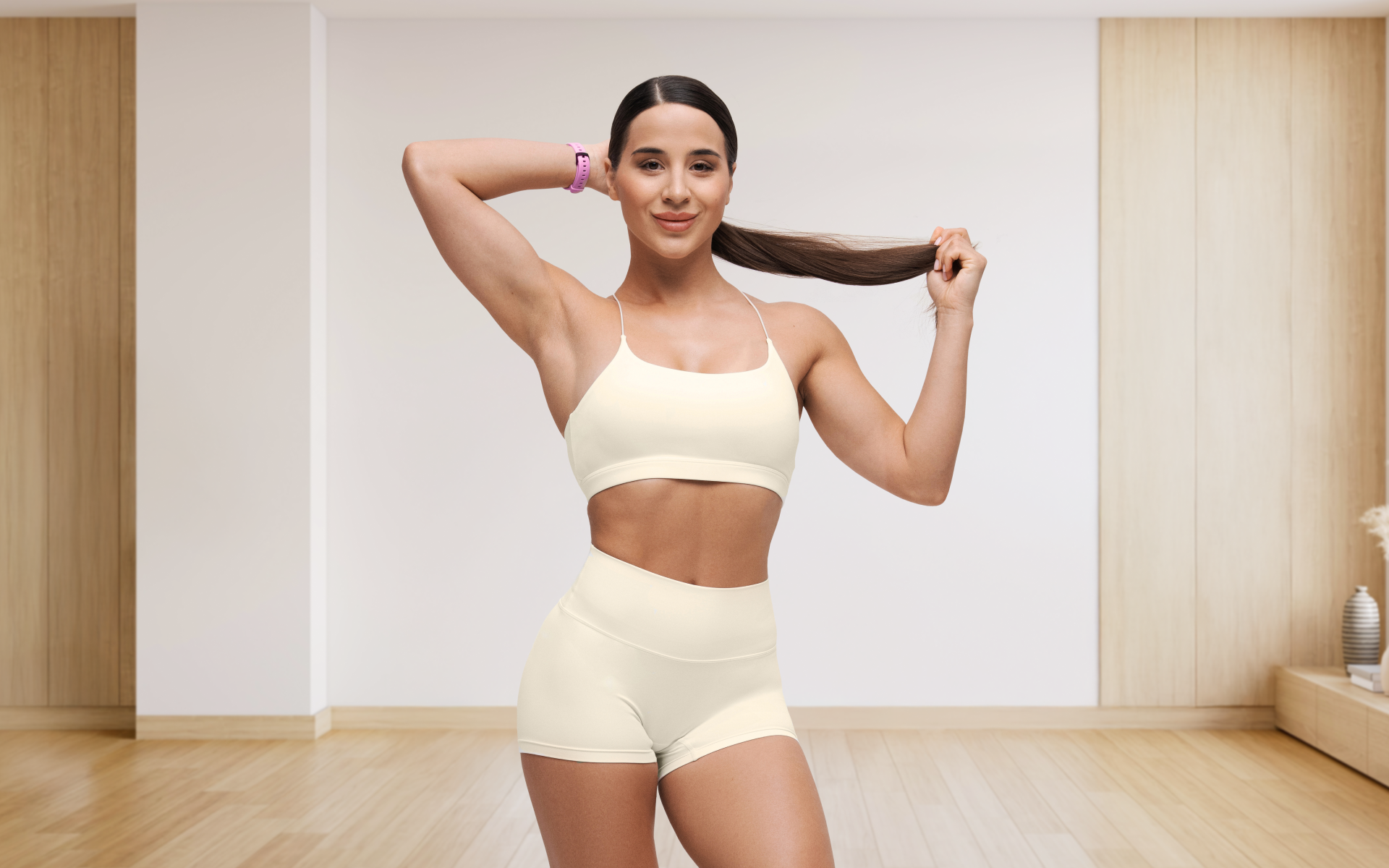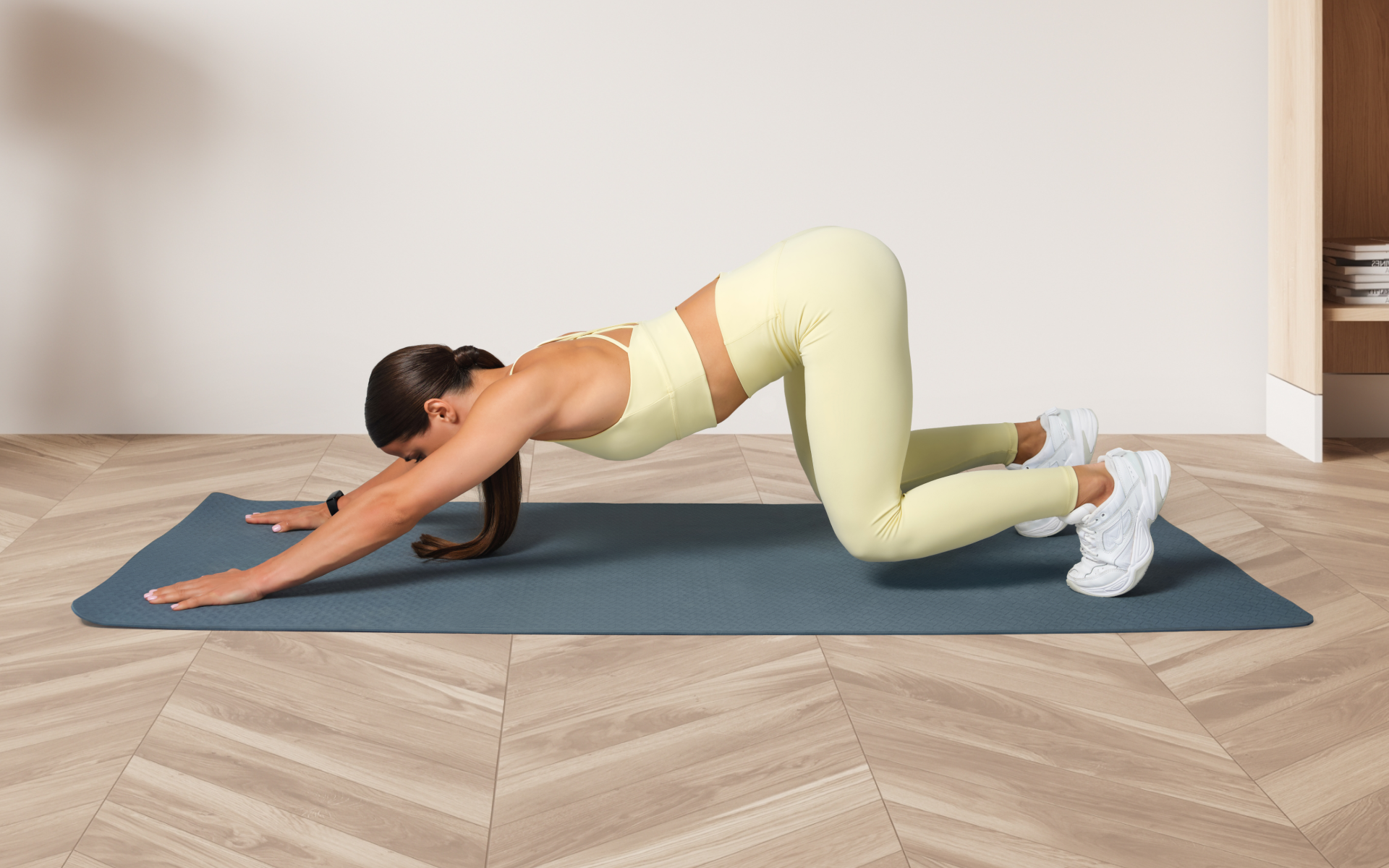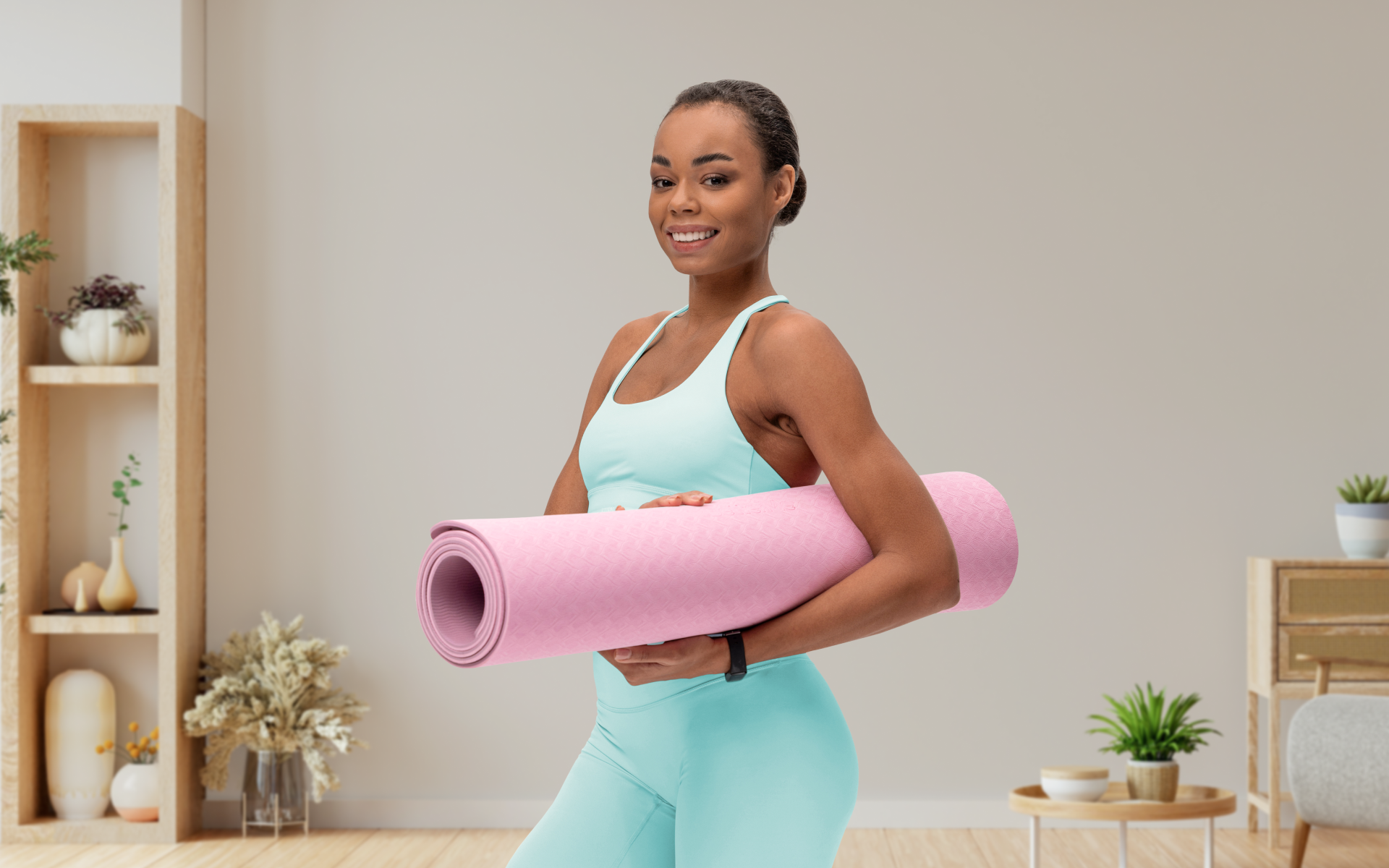Starting your Pilates journey can feel overwhelming. How many times per week should you practice? What type of Pilates should you choose? These questions are common among beginners eager to experience the transformative benefits of this powerful movement system.
Joseph Pilates, the creator of this method, had clear guidance on frequency and practice. In his foundational work “Return to Life Through Contrology,” he recommended practicing just 4 times per week. This frequency might surprise you if you’ve always thought you needed daily sessions to see results.
Unlike high-intensity workouts that require more extended recovery periods, Pilates focuses on controlled movements that strengthen your body while improving flexibility and mental focus. These skills make Pilates an ideal practice for beginners seeking sustainable fitness habits.
Let’s explore how to create a Pilates routine that works for your lifestyle and goals.
What Type Of Pilates Is Best For Beginners?
Mat Pilates serves as the perfect starting point for most beginners. This foundational practice requires minimal equipment and allows you to focus on mastering the fundamental principles without distractions.
Joseph Pilates designed his original 34 exercises specifically for the mat, creating a logical sequence that warms up your body, progresses to more challenging movements, and finishes with cooling stretches (1). Mat Pilates familiarizes beginners with the basics of Pilates.
Mat Pilates offers several advantages for newcomers:
- You can practice anywhere, making it convenient for Pilates at home programs.
- The exercises teach you to work against gravity using your own body weight, building functional strength that translates to daily activities.
- Most importantly, mat work helps you develop the mind-body connection that forms the core of all Pilates practice.
Reformer Pilates becomes an excellent next step, especially under professional guidance. The reformer’s springs provide both assistance and resistance, helping you understand proper alignment while challenging your muscles in new ways.
The machine’s feedback system makes it easier to feel when you’re performing movements correctly, accelerating your learning curve.
For beginners dealing with injuries or mobility limitations, reformer sessions with a qualified instructor can be particularly beneficial. The equipment allows for modifications that make exercises accessible while still providing effective strengthening and rehabilitation benefits (2).
BetterMe: Health Coaching app helps you achieve your body goals with ease and efficiency by helping to choose proper meal plans and effective workouts. Start using our app and you will see good results in a short time.
Other Pilates variations worth considering include:
- Clinical Pilates: Offered by physiotherapists for injury rehabilitation
- Contemporary Pilates: Incorporates modern exercise science principles
- Stott Pilates: Emphasizes anatomical principles and modern postural analysis.
When choosing between mat and reformer Pilates, consider your goals, budget, and access to equipment. Mat Pilates works well if you want to establish a consistent home practice, while reformer sessions are ideal if you prefer guided instruction and have access to a studio.
To learn more about fundamental movements and principles, explore our comprehensive guide to Pilates basics.
Read more: A Quick Guide To Simple Pilates Posture Exercises For Better Alignment
What Is The Perfect Pilates Schedule For A Beginner?
Joseph Pilates recommended performing Pilates workout beginner exercises 4 times per week for optimal results.
This frequency aligns perfectly with current exercise science guidelines for strength training activities, which suggest 2-4 sessions per week for muscle development and maintenance (1).
Here are several sample schedules that incorporate this wisdom while meeting modern lifestyle demands:
Pilates-Only Schedule (4 days/week)
- Monday: 45-minute mat session
- Wednesday: 30-minute focused core work
- Friday: 45-minute full-body mat session
- Saturday: 30-minute gentle flow or reformer class
Pilates + Cardio Split
- Tuesday: 30-minute Pilates + 20-minute walk
- Thursday: 45-minute Pilates session
- Saturday: 30-minute Pilates + 30-minute cycling
- Sunday: Gentle Pilates flow (20 minutes)
Pilates + Strength Training
- Monday: Strength training (upper body)
- Tuesday: 30-minute Pilates (core focus)
- Thursday: Strength training (lower body)
- Friday: 45-minute full-body Pilates
Pilates as Active Recovery
- Monday/Wednesday/Friday: Primary sport or intense training
- Tuesday: 20-minute gentle Pilates flow
- Thursday: 30-minute Pilates core work
- Saturday: 45-minute comprehensive Pilates session
Sport-Specific Integration
- Pre-season: 3-4 Pilates sessions focusing on injury prevention
- In-season: 2 Pilates sessions for maintenance and recovery
- Off-season: 4 sessions emphasizing strength building and flexibility
Each schedule ensures you meet the minimum physical activity guidelines for adults while allowing adequate recovery time between sessions. The key is to tailor your practice to your needs and abilities, and progress gradually over time.
For detailed weekly programming options, check out our Pilates weekly workout plan.
How Often Should I Do Pilates As A Beginner?
The optimal frequency for beginner Pilates practitioners is 3-4 times per week.
This recommendation stems directly from Joseph Pilates’ original prescription and aligns with current understanding of how our bodies adapt to strength training stimuli (1).
Pilates functions as a form of resistance training, using body weight and controlled movements to challenge your muscles. Like other strength-building activities, your muscles need time to recover and adapt between sessions. Practicing 3-4 times per week provides the perfect balance between stimulus and recovery (3).
Why this frequency works:
Your nervous system learns new movement patterns most effectively with regular, consistent practice. Daily sessions can lead to fatigue and poor movement quality, while training only 1-2 times per week doesn’t provide enough stimulus for meaningful adaptation.
The 48-72 hour recovery window between sessions allows your muscles to repair and strengthen while your brain consolidates the motor patterns you’ve practiced (4). This neurological adaptation is crucial for developing the precise control that characterizes skilled Pilates practice (5).
Adjusting frequency based on goals:
- Injury rehabilitation: Start with 2-3 sessions under professional guidance
- General fitness: 3-4 sessions per week provide optimal benefits
- Athletic performance: 4 sessions with sport-specific modifications
- Stress management: 3 sessions focusing on mindful movement and breathing
Remember that consistency trumps frequency: 2-3 sessions per week, maintained over months, will yield better results than daily practice that you can’t sustain long-term.
How Long Should A Pilates Session Be?
Joseph Pilates recommended completing his routine in approximately 10 minutes once you master the exercises. However, this timeline reflects his expectation of perfect execution and deep familiarity with the movements, which take considerable practice to achieve.
For Pilate classes for beginners, realistic session lengths include:
20-30 minutes: Ideal for focused practice sessions targeting specific areas like core strengthening or spinal mobility. This duration allows you to maintain concentration and proper form without fatigue.
45-60 minutes: Perfect for comprehensive full-body sessions that include warm-up, main exercises, and cool-down. Most studio classes fall into this range, providing time for instruction and refinement.
10-15 minutes: Excellent for daily movement breaks or as part of a larger workout routine. Short sessions can focus on a few key exercises performed with precision.
Session length variables to consider:
- Your fitness level: Beginners may need longer to master positions and transitions
- Complexity of exercises: Advanced movements require more setup and practice time
- Class vs. solo practice: Group instruction naturally takes longer than individual practice.
- Equipment used: Reformer sessions often run longer due to machine adjustments.
As you develop proficiency, you’ll naturally move through exercises more efficiently, allowing you to accomplish more in less time while maintaining the precision that makes Pilates effective.
Whether you’re a workout beast or just a beginner making your first foray into the world of fitness and dieting – BetterMe has a lot to offer to both newbies and experts! Install the app and experience the versatility first-hand!
How Long Can You See Results From Pilates?
Joseph Pilates made a famous promise about the timeline for results:
“In 10 sessions you will feel the difference, in 20 you will see the difference, and in 30 you will have a completely new body.” This framework provides a realistic expectation for your Pilates journey.
The progression typically unfolds as follows:
Sessions 1-10 (2.5-3 weeks): You’ll develop body awareness and notice improved posture. Your core will feel more engaged during daily activities, and you may experience better sleep quality and reduced stress levels.
Sessions 11-20 (5-6 weeks): Visible changes emerge in your muscle tone and flexibility. Friends and family may comment on your improved posture and more graceful movement patterns. You’ll notice increased strength in activities like climbing stairs or carrying groceries.
Sessions 21-30 (7-8 weeks): Significant transformation becomes apparent. Your body moves with greater efficiency and control. Chronic pain patterns may resolve, and you’ll demonstrate markedly improved balance and coordination.
Beyond 30 sessions: Pilates becomes integrated into how you move through life.
The principles of alignment, breath, and control influence your posture at work, your athletic performance, and your overall physical confidence.
Factors that influence your timeline:
- Starting fitness level
- Attention to proper form
- Consistency of practice
- Individual body mechanics and healing capacity
- Integration of Pilates principles into daily movement
The key to lasting results lies in viewing Pilates not as a temporary fix but as a lifelong practice. Like learning a musical instrument, the benefits compound over time, creating lasting changes in how your body functions and feels.
Consider making Pilates part of your active lifestyle rather than a short-term intervention. This mindset shift ensures you’ll continue reaping benefits for years to come.
Read more: 34 Original Pilates Exercises: Complete Classical Mat Sequence
Does Pilates Tone Your Body?
Yes, Pilates absolutely tones your body, though not in the way many people imagine.
Joseph Pilates claimed his method would develop “muscular power with corresponding endurance” and create a body with “suppleness, natural grace, and skill.”
What “toning” actually means:
When people talk about muscle “toning,” they’re referring to improved muscle definition and firmness.
This toning happens through 2 primary mechanisms:
- Increased muscle mass
- Decreased body fat percentage.
Pilates contributes to both through its unique approach to resistance training (6).
How Pilates creates a “toned” appearance:
Pilates exercises work muscles through their full range of motion against resistance (gravity, springs, or bands).
This muscle engagement creates lean muscle mass while improving muscle fiber coordination.
The result is muscles that appear more defined and respond better to neural input (6, 7).
The practice also emphasizes postural muscles often neglected in traditional workouts.
Strengthening these deep stabilizers creates the appearance of a longer, more elegant silhouette, which many people describe as “lengthened” muscles (8).
Clarifying common misconceptions:
Muscles cannot actually become “longer” through exercise.
Your muscle length is determined by where it attaches to your bones, and this attachment doesn’t change. Pilates improves muscle flexibility, coordination, and strength across the full range of motion, creating the appearance of length (9).
Similarly, Pilates doesn’t “lengthen” your spine. Instead, it teaches you to decompress and properly align your vertebrae, allowing you to stand and move at your full height with improved posture (10).
The physiological changes you can expect:
- Reduced muscle tension and compensatory patterns
- Deeper stretches and fewer muscle aches
- Increased muscle endurance and strength
- Improved muscle fiber recruitment patterns
- Enhanced intermuscular coordination
- Better posture and alignment
The “Pilates body” that many practitioners develop reflects these changes: strong, flexible, well-coordinated muscles that create an appearance of natural grace and effortless movement.
For specific exercise routines that target muscle toning, explore our detailed Pilates workout routine guide.
What I Wish I Knew Before Starting Pilates
Starting Pilates as a complete beginner, I made numerous assumptions that hindered my progress. Looking back, understanding these key insights from Joseph Pilates’ original teachings would have accelerated my journey and prevented frustration.
- Quality Always Trumps Quantity
I initially believed more repetitions meant better Pilates body results.
Pilates taught me that performing 5 near-perfect repetitions creates more benefit than 20 rushed and sloppy ones. Joseph Pilates emphasized complete mental control over every movement, stating that exercises should become “part of your very self, securely stored away forever in your subconscious mind.”
Focus on mastering each exercise completely before progressing. This approach prevents the need to “unlearn” poor movement patterns later.
- Breathing Is The Foundation
I treated breathing as an afterthought, concentrating primarily on beginner Pilates poses and their physical aspect. This focus was a fundamental error.
Proper breathing oxygenates your muscles, facilitates movement, and connects your mind to your body.
Pilates exercises utilize specific breathing patterns that support the movements.
Learning these breathing patterns early transforms your entire practice.
- Your Core Is More Than Your Abs
I mistakenly believed Pilates was primarily about abdominal strengthening.
The true “powerhouse” includes your deep abdominal muscles, back muscles, pelvic floor, and diaphragm working as an integrated system.
Understanding this concept revolutionized how I approached every exercise and improved my daily posture and movement quality.
- Progress Is Not Always Linear
Some days I felt stronger and more coordinated than others. This frustrated me until I learned that skill acquisition involves natural fluctuations. Your nervous system needs time to consolidate new movement patterns.
Celebrate small improvements and trust the process. Consistency over perfection leads to lasting change.
- Mental Focus Is Essential
I approached early sessions as purely physical workouts, letting my mind wander.
Pilates demands complete concentration and mental engagement with each movement.
Joseph Pilates called his method “Contrology” because it emphasizes conscious control over every aspect of movement. This mental component is what separates Pilates from simple exercise.
- Flexibility Requires Strength
I expected Pilates to make me flexible through stretching. Instead, I learned that true flexibility comes from balanced strength throughout your full range of motion.
Pilates creates “functional flexibility,” the ability to move freely while maintaining stability and control.
Pilates is primarily a strength training method that incorporates elements of flexibility and coordination. While traditional Pilates isn’t designed as cardiovascular exercise, dynamic sequences and circuit-style classes can elevate your heart rate. Joseph Pilates intended his method to build “muscular power with corresponding endurance,” focusing on controlled strength movements rather than aerobic conditioning. Eat a light snack 30-60 minutes before class if you’re hungry. Good options include a banana with almond butter, Greek yogurt with berries, or a small smoothie. Avoid large meals 2-3 hours before practice, as Pilates involves prone positions and core engagement that can be uncomfortable with a full stomach. Stay hydrated but don’t drink excessive water immediately before class. Allow time for your body to cool down naturally after class. Take a few minutes to stretch gently or walk to help your heart rate return to normal. Stay hydrated and consider having a protein-rich snack within 30 minutes to support muscle recovery. Avoid intense physical activity immediately after, as your muscles need time to adapt to the neuromuscular patterns you’ve just practiced. Pilates provides significant strength benefits, but adding weight training can be beneficial depending on your goals. Pilates excels at building functional strength, core stability, and muscle endurance. If your goals include maximum muscle mass, power development, or sport-specific strength, combining Pilates with weight training creates an ideal program. Many athletes use Pilates as their foundation while adding targeted resistance training for specific needs.Frequently Asked Questions
Is Pilates cardio or strength?
What to eat before a Pilates class?
What should I do after Pilates?
Do I need to lift weights if I do Pilates?
The Bottom Line
Creating a lasting Pilates practice requires more than knowing the right frequency or duration. It demands understanding that this method offers a complete system for physical and mental well-being.
Start with realistic expectations and consistent practice. Whether you choose mat classes at home or reformer sessions at a studio, focus on the quality of each movement. Remember Joseph Pilates’ wisdom that 4 sessions per week, performed with precision and mental engagement, will transform your body and mind more effectively than daily rushed routines.
Your Pilates journey is unique. Some weeks you’ll feel stronger and more coordinated; others may feel challenging as your body adapts to new demands. This variability is normal and necessary for lasting change.
Trust the process, stay consistent, and allow the principles of control, concentration, and flowing movement to enhance not just your exercise sessions but your entire approach to living in your body.
DISCLAIMER:
This article is intended for general informational purposes only and does not serve to address individual circumstances. It is not a substitute for professional advice or help and should not be relied on for making any kind of decision-making. Any action taken as a direct or indirect result of the information in this article is entirely at your own risk and is your sole responsibility.
BetterMe, its content staff, and its medical advisors accept no responsibility for inaccuracies, errors, misstatements, inconsistencies, or omissions and specifically disclaim any liability, loss or risk, personal, professional or otherwise, which may be incurred as a consequence, directly or indirectly, of the use and/or application of any content.
You should always seek the advice of your physician or other qualified health provider with any questions you may have regarding a medical condition or your specific situation. Never disregard professional medical advice or delay seeking it because of BetterMe content. If you suspect or think you may have a medical emergency, call your doctor.
SOURCES:
- PILATES’ Return to Life Through Contrology (n.d., ooks.out.csli.me)
- Effects of reformer pilates on body composition, strength, and psychosomatic factors in overweight and obese women A randomized controlled trial (2025, pmc.ncbi.nlm.nih.gov)
- Effects of Resistance Training Frequency on Measures of Muscle Hypertrophy: A Systematic Review and Meta-Analysis (2016, link.springer.com)
- Unlock the benefits: Why rest, recovery and sleep matter more than you think (2025, hw.qld.gov.au)
- Comparisons of functional movements and core muscle activity in women according to Pilates proficiency (2024, frontiersin.org)
- Effectiveness of Pilates Training on Body Composition and Isokinetic Muscular Strength in Adolescent (2022, researchgate.net)
- Effects of a Pilates exercise program on muscle strength, postural control and body composition: results from a pilot study in a group of post-menopausal women (2015, pmc.ncbi.nlm.nih.gov)
- Effects of Core Stability Training on Deep Stabilizing Muscle Function and Neuromuscular Control (2025, mdpi.com)
- Pilates for improvement of muscle endurance, flexibility, balance, and posture (2016, pubmed.ncbi.nlm.nih.gov)
- Effects of Pilates exercises on spine deformities and posture: a systematic review (2024, bmcsportsscimedrehabil.biomedcentral.com)
